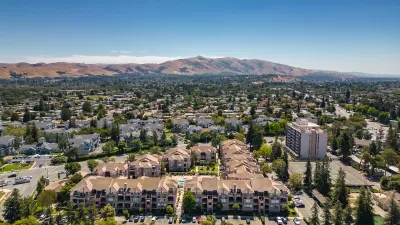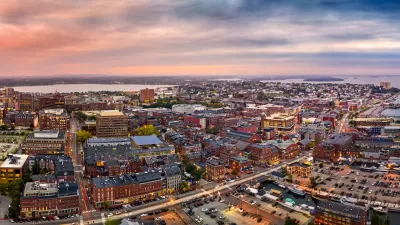When wanting to downsize their living situation, some older Americans are startled to find a dearth of smaller housing units in their neighborhoods.

Writing in the New York Times, Dana Goldstein and Robert Gebeloff describe an unexpected consequence of decades of strict single-family zoning and restrictions on multifamily units: now, aging Boomers and Gen X-ers who want to downsize from their sprawling family homes are finding it difficult to secure new housing in the communities they live in.
As the number of people over 50 living alone rises sharply—today, 36 percent of households headed by an adult over 50 have a single occupant—“the nation’s housing stock has grown out of sync with these shifting demographics,” Goldstein and Gebeloff explain.
Living solo in homes with three or more bedrooms sounds like a luxury but, experts said, it is a trend driven less by personal choice than by the nation’s limited housing supply. Because of zoning and construction limitations in many cities and towns, there is a nationwide shortage of homes below 1,400 square feet, which has driven up the cost of the smaller units that do exist, according to research from Freddie Mac.
Now, people seeking to move into smaller homes or condos often find it more expensive, if not impossible. As the article points out, “The constraints are especially severe for many older Black Americans, for whom the legacy of redlining and segregation has meant that homeownership has not generated as much wealth.”
FULL STORY: As Gen X and Boomers Age, They Confront Living Alone

Planetizen Federal Action Tracker
A weekly monitor of how Trump’s orders and actions are impacting planners and planning in America.

Congressman Proposes Bill to Rename DC Metro “Trump Train”
The Make Autorail Great Again Act would withhold federal funding to the system until the Washington Metropolitan Area Transit Authority (WMATA), rebrands as the Washington Metropolitan Authority for Greater Access (WMAGA).

DARTSpace Platform Streamlines Dallas TOD Application Process
The Dallas transit agency hopes a shorter permitting timeline will boost transit-oriented development around rail stations.

Renters Now Outnumber Homeowners in Over 200 US Suburbs
High housing costs in city centers and the new-found flexibility offered by remote work are pushing more renters to suburban areas.

The Tiny, Adorable $7,000 Car Turning Japan Onto EVs
The single seat Mibot charges from a regular plug as quickly as an iPad, and is about half the price of an average EV.

Supreme Court Ruling in Pipeline Case Guts Federal Environmental Law
The decision limits the scope of a federal law that mandates extensive environmental impact reviews of energy, infrastructure, and transportation projects.
Urban Design for Planners 1: Software Tools
This six-course series explores essential urban design concepts using open source software and equips planners with the tools they need to participate fully in the urban design process.
Planning for Universal Design
Learn the tools for implementing Universal Design in planning regulations.
Municipality of Princeton
Roanoke Valley-Alleghany Regional Commission
City of Mt Shasta
City of Camden Redevelopment Agency
City of Astoria
Transportation Research & Education Center (TREC) at Portland State University
US High Speed Rail Association
City of Camden Redevelopment Agency
Municipality of Princeton (NJ)





























